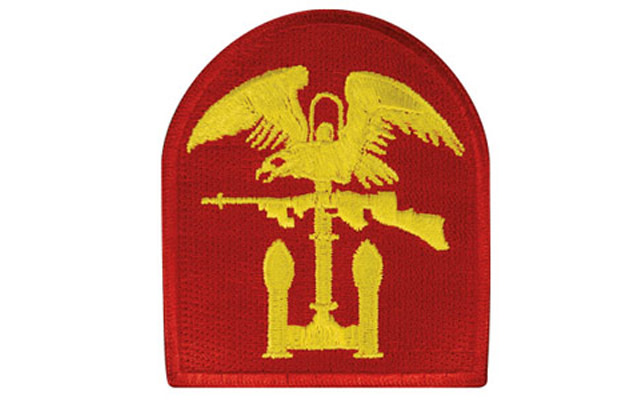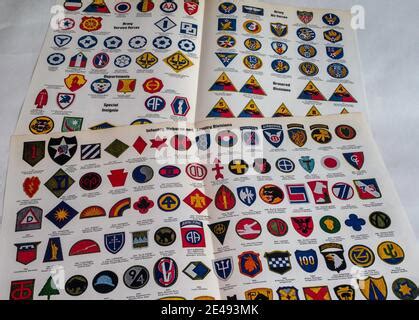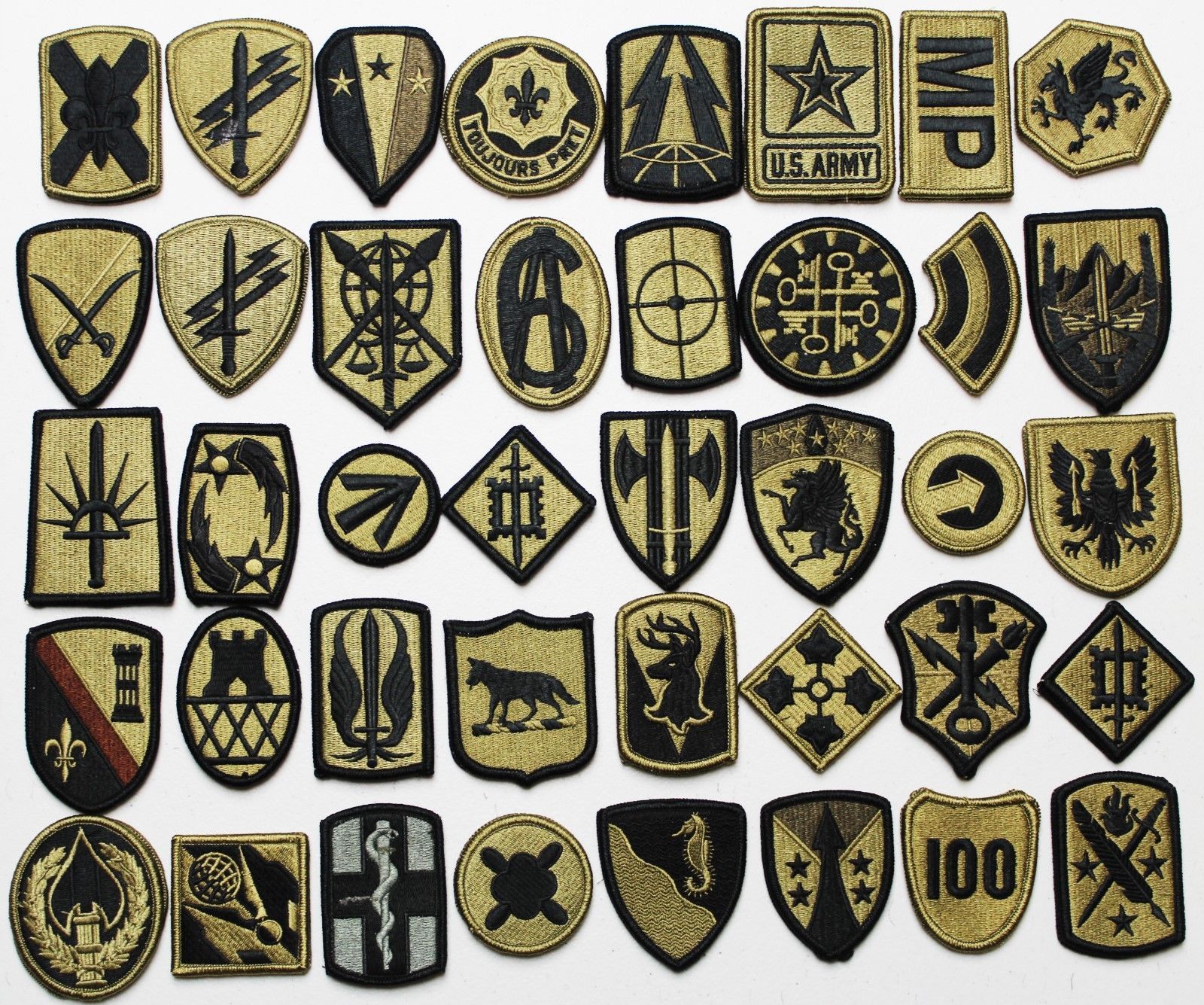United States Military Patches

The United States military has a rich history of using patches to identify units, signify achievements, and commemorate events. These patches, also known as insignia, have been an integral part of the military's visual identity since the early 20th century. With thousands of unique designs, military patches have become a popular collector's item and a way for service members to showcase their pride and affiliation with their unit or branch of service.
History of Military Patches

The use of military patches in the United States dates back to World War I, when the Army introduced the first shoulder sleeve insignia (SSI) to identify units. These early patches were simple in design and featured basic symbols, such as crosses, stars, and animals. As the military expanded and new units were formed, the need for distinctive insignia grew, and by World War II, patches had become a standard part of military uniforms. The Air Force, established in 1947, also adopted the use of patches, while the Navy and Marine Corps used a combination of patches and other insignia to identify units and specialties.
Types of Military Patches
There are several types of military patches, each with its own unique purpose and significance. Some of the most common types include:
- Shoulder Sleeve Insignia (SSI): Worn on the sleeve of a uniform to identify a unit or branch of service.
- Distinctive Unit Insignia (DUI): Worn on the uniform to identify a specific unit or organization.
- Combat Patch: Awarded to service members who have participated in combat operations.
- Specialty Patch: Identifies a service member’s specialty or job function, such as a medic or military police.
| Patch Type | Description |
|---|---|
| SSI | Shoulder Sleeve Insignia, worn on the sleeve to identify a unit or branch of service. |
| DUI | Distinctive Unit Insignia, worn on the uniform to identify a specific unit or organization. |
| Combat Patch | Awarded to service members who have participated in combat operations. |
| Specialty Patch | Identifies a service member's specialty or job function. |

Key Points
- Military patches have been used in the United States since World War I to identify units and signify achievements.
- There are several types of military patches, including SSI, DUI, Combat Patch, and Specialty Patch.
- Patches can be worn on the uniform to identify a unit, branch of service, or specialty.
- The value and rarity of a patch can vary greatly depending on its age, condition, and the unit or branch of service it represents.
- Collecting military patches can be a rewarding hobby, but it requires knowledge and understanding of the history and significance behind each patch.
Military Patch Collecting

Collecting military patches has become a popular hobby, with enthusiasts seeking out rare and unique patches to add to their collections. With thousands of different patches to choose from, collectors can focus on specific areas of interest, such as World War II patches, Air Force patches, or patches from specific units or branches of service. When collecting military patches, it’s essential to consider the condition, rarity, and authenticity of each patch, as these factors can greatly impact its value.
Authenticity and Condition
When collecting military patches, authenticity and condition are crucial factors to consider. Genuine military patches are made with high-quality materials and feature precise stitching and detail. Collectors should be wary of reproductions or fake patches, which can be difficult to distinguish from the real thing. The condition of a patch can also impact its value, with patches in excellent condition commanding higher prices than those that are worn or damaged.
Military patches have played a significant role in the history of the United States military, serving as a visual representation of a unit's identity and a symbol of pride and achievement. Whether you're a seasoned collector or just starting out, understanding the history and significance of military patches can enhance your appreciation and enjoyment of these unique and fascinating items.
What is the most valuable military patch?
+The value of military patches can vary greatly depending on their rarity, condition, and historical significance. One of the most valuable military patches is the 1st Infantry Division patch, which was worn by soldiers during World War I and World War II. In excellent condition, this patch can fetch high prices at auction.
How can I identify a genuine military patch?
+To identify a genuine military patch, look for high-quality materials, precise stitching, and attention to detail. Genuine patches will also feature the correct colors, symbols, and insignia for the unit or branch of service they represent. Be wary of reproductions or fake patches, which can be difficult to distinguish from the real thing.
Can I wear military patches on my uniform?
+Only authorized personnel can wear military patches on their uniform. The wear of military patches is regulated by the military’s uniform code, and service members must follow specific guidelines when wearing patches. Civilians can wear military patches on jackets, hats, or other clothing items, but they should be aware of the patch’s significance and history to avoid misrepresenting themselves as military personnel.



